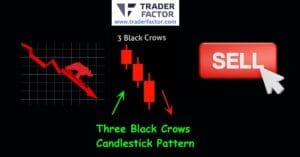Effective hedging is critical to maintaining a profitable trading strategy as it provides protection against sudden market movements. In this blog post, we’ll explore the most efficient hedging strategies for forex traders and emphasize the importance of an effective risk management plan.
We’ll also share valuable tips to help you improve your portfolio performance while reducing your exposure to risky positions. If you’re ready to learn how to hedge effectively as a forex trader, let’s dive in!
- Discover what hedging is
- Uncover the benefits & risks
- Learn to select the right strategy
- Explore common approaches
- Find out how to implement & monitor
- Avoid common pitfalls
Table of Contents
ToggleImportance of Hedging in Forex Trading

Forex trading is highly volatile, which means managing risks is critical for you. A useful risk management strategy traders often use is hedging. This means taking an opposing position to your existing trade, reducing potential losses from adverse price movements.
You can hedge by taking a short position on the same currency pair you’re long on. If the market turns against your initial trade, you’ll offset the loss by gaining on the short position. Options contracts can also offer protection against unexpected market movements.
In short, hedging is an essential tool for you as a trader to limit potential losses and secure your trading capital in the unpredictable foreign exchange market.

Minimizes Risks
Hedging can aid in curtailing risks in forex trading by counterbalancing the impacts of adverse market movements. You can limit your exposure and potential losses by opening trades in opposite directions.
Let’s consider you have an open position in the EUR/USD pair. If you believe that this pair is going to increase in value but are apprehensive about potential downside risks, you can open a sell position in another foreign currency pair like USD/JPY. By doing so, any potential losses on the EUR/USD position can be offset with any gains on the USD/JPY position.
Protects Investments
Hedging protects your investments in foreign exchange trading by reducing the impact of market volatility. You can diversify your portfolio and manage risks more effectively by safeguarding your investments.
For example, you may hold trades across various foreign currency pairs and worry about market volatility affecting your overall returns. To protect your investments, you can use hedging to offset any potential losses. If you have an open long position in the EUR/USD pair, you could hedge by opening a short position in the GBP/USD pair. In case the EUR/USD pair experiences a sudden drop in value, you will experience losses, but the gains from the GBP/USD position can offset those losses, protecting your overall investment.

Enhancing Trading Flexibility
Hedging can improve your trading flexibility by giving you more control over your positions. You can use hedging to adjust your portfolio as market conditions change, providing additional options for managing trades.
To illustrate, suppose you have a long-term bullish outlook on the EUR/USD pair but are concerned about short-term volatility. In that case, you can use hedging to modify your positions as necessary. For example, you could open a sell position in the EUR/USD pair to mitigate any short-term downward movements while maintaining your long-term bullish outlook.
Mitigates Market Impact
Hedging mitigates the impact of market fluctuations on your forex trades. You can use this strategy to reduce the impact of sudden price movements and limit your exposure to unfavorable market conditions.
If you’re holding a large position in a single foreign currency pair, you could be at risk of significant losses if there’s a sudden market downturn. To mitigate the market impact, you can use hedging.
One way is to open a position in a closely and positively correlated currency pair, such as forex pairs like EUR/USD and USD/CHF. If the EUR/USD pair experiences a sudden drop in value, any losses can be offset by gains in the USD/CH.

Provides Predictability
Hedging allows you to have predictability in foreign exchange trading by providing a means to plan for potential losses and manage risks accordingly. This strategy lets you have control and certainty over your portfolios, which makes informed decisions based on market conditions much easier.
For instance, you may have a long position in the EUR/USD pair with a profit target of 1.1500 but are worried about potential downside risks due to a change in economic policy decisions by the European Central Bank. In this case, you can use hedging to protect against sudden foreign currency fluctuations that may negatively impact your trade. To hedge your trade, you can open a sell position in the EUR/USD pair at the current market price. This will act as a hedge against any potential losses on your long position. If the value of the EUR/USD pair decreases, you will experience losses on your long position, but the gains from your short position will offset any losses, providing predictability and reducing the overall risk.
Types of Hedging Strategies in Forex Trading

As a trader, you can use hedging, a risk management tool, to protect yourself against potential losses in the financial markets. As noted earlier in this text, forex hedging involves opening multiple positions on the same currency pair or different currency pairs to mitigate the risk of adverse market movements.
Implementing forex hedging strategies helps you ensure that you can still profit from your trades even if the market moves against them.
Hedging’s importance cannot be overstated, as it can help you prevent massive losses that could wipe out your account. You can avoid the stress and anxiety of watching your trades fall into negative territory with the help of hedging.
Here are the five types of hedging strategies used in Forex trading.

Simple Forex Hedging
The most frequently used hedging strategy in Forex trading is Simple Forex Hedging. It involves you opening two opposing positions on one currency pair concurrently. You can buy the EUR/USD and sell the same currency pair simultaneously. The strategy’s benefit is that it limits the risk of losses in unfavorable price movements.
Imagine you have opened a long position on the EUR/USD pair, anticipating that the Euro will strengthen against the US Dollar. However, due to unexpected economic news, the value of the Euro suddenly drops, causing your long position to incur losses.
To minimize your losses, you could use the Simple Forex Hedging strategy. You would open a short position on the same currency pair at the same time, selling the EUR/USD pair.
This way, if the Euro continues to drop, your long position will incur losses, but your short position will gain profits, balancing out your overall loss.
By implementing the Simple Forex Hedging strategy, you limit the risk of incurring substantial losses due to unfavorable price movements, giving you a sense of security while trading.

Currency Options Hedging
Currency Options Hedging is a strategy you can employ to hedge against losses. With currency options, you get the right, but not the obligation, to buy or sell a currency at a specified exchange rate within a specific time frame.
A put option is an effective way to hedge against potential declines in currency value, with the added advantage of limiting losses.
However, this strategy can be costly, as you must pay for the option premium. It’s important to factor in the cost of the option premium when executing this strategy.
Consider this scenario: let’s say you’ve bought 10,000 units of the EUR/USD currency pair at a rate of 1.1800, expecting an increase in its value. If the EUR/USD exchange rate drops unexpectedly to 1.1700, you risk losing money. To hedge against this potential loss, you can buy a put option on the EUR/USD currency pair at a strike price of 1.1700. The put option gives you the right, but not the obligation, to sell the EUR/USD currency pair at the strike price of 1.1700 within a specific time frame. If the EUR/USD exchange rate drops to 1.1700 or lower, you can exercise the put option and sell the currency pair at the strike price of 1.1700, limiting your losses. However, if the exchange rate remains above 1.1700, you can let the option expire and continue with your original trade.
Forward Forex Hedging
If you are looking for a way to mitigate the risk of currency fluctuations in Forex trading, Forward Forex Hedging may be the strategy for you. This technique involves entering into a forward contract with another party to buy or sell a currency at a set future date and exchange rate, protecting you from potential price changes.

For example, let’s say you’re a US-based company that imports goods from Europe and needs to make a payment in Euros in six months. You could enter into a forward contract to purchase Euros at the current exchange rate, effectively locking in a specific exchange rate and avoiding any potential losses due to unfavorable currency fluctuations.
While this strategy offers the benefit of mitigating currency risk, it can be inflexible. Once a forward contract is entered into, it cannot be changed, even if the market moves in your favor. Nonetheless, Forward Forex Hedging is a useful tool for managing currency risk in international trade and finance.
Multiple Currency Hedging
Multiple Currency Hedging is a strategy that involves hedging multiple currency pairs simultaneously. This technique helps to diversify the risk across different currencies and can reduce the overall risk exposure. The advantage of this strategy is that it provides a higher level of protection against market volatility.
For example, let’s say you have an open position in the EUR/USD pair and are concerned about potential currency fluctuations. You could use Multiple Currency Hedging by simultaneously opening positions in other forex pairs such as GBP/USD, USD/JPY, and AUD/USD. This would allow you to diversify your risk across multiple currencies and potentially offset any losses from the EUR/USD pair.

The advantage of this strategy is that it provides a higher level of protection against market volatility, as you are not relying solely on one currency pair. However, it is important to monitor each currency pair carefully and adjust your hedge accordingly, as changes in one currency could affect the others. With careful management, Multiple Currency Hedging can be an effective way to reduce your overall risk exposure in Forex trading.
Options Straddle Hedging
Options Straddle Hedging is a strategy that involves the obligation to buy both a call option and a put option on the same currency pair with the same strike price and expiration date. This strategy helps to hedge against unforeseen market events that could cause significant price movements.
To illustrate, let’s say you have an open position in the EUR/USD pair but are concerned about potential market volatility due to an upcoming economic announcement. You could use Options Straddle Hedging by purchasing both a call option and a put option on the EUR/USD pair with the same strike price and expiration date. This way, you’ll profit from whichever direction the market moves after the announcement.
The advantage of this strategy is that it helps to hedge against unforeseen market events that could cause significant price movements in either direction. However, it’s important to remember that options contracts come with their own set of risks and should be used carefully.

Pros of Hedging
As mentioned severally in this text, hedging is an investment technique that can safeguard traders against large losses by utilizing strategically-placed transactions that help limit exposure to potential risks. Here is a summary of advantages of hedging in forex trading;
- Hedging helps you minimize losses by offsetting potential losses from an existing position.
- It enables you to stay in the game and reduce the risk levels.
- It’s cost-effective and doesn’t require holding multiple positions in the market.
- Hedging reduces the impact of market volatility by offsetting potential losses from an existing position.
- You can protect your profits in the market by hedging your positions.
- You can use hedging to trade in both directions, profit from an upward trend and protect yourself from a downward trend.
- Hedging is a flexible risk management strategy that can be adopted in different ways to suit your trading style.
- You can use hedging to manage your long-term investments and reduce your risk exposure.
- Hedging can also provide a cash flow by earning interest on your positions.
- Hedging is a proven risk management strategy that has been tested and proven to work in different market conditions.

Cons of Hedging
While hedging may seem like a smart move, it also has several disadvantages that traders need to consider.
- Hedging limits potential profits, as a trader gains from one investment while incurring losses on the other. As a result, traders who use forex hedging strategies may miss out on potential market conditions.
- Hedging requires opening multiple positions, which can increase the risk of losses and mistakes for inexperienced traders. Overtrading happens when too many trades are open at the same time, leading to greater volatility.
- Adding a hedge to investments increases transaction costs in Forex Trading. Hedging may also require taking a position in a different foreign currency, which can affect pricing dynamics.
- Hedging does not always produce expected results, as forex markets are volatile and predictions may not always be accurate. Therefore, hedging may not entirely protect traders from losses if underlying assets’ pricing shifts unexpectedly.
- Whereas hedging can provide temporary protection from harsh market conditions, it can also cause psychological stress. Traders may rely exclusively on hedging to mitigate losses, which can cause anxiety and negatively impact their performance.

Choosing the Right Forex Broker for Hedging

To succeed in forex trading, it’s essential to choose the right forex broker. As a trader, you need to understand hedging and find a broker with the best hedging options to minimize losses and maximize gains.
When assessing a forex broker for hedging, prioritize regulatory status, hedging options, trading platform, spreads, fees, and customer support.
By taking the time to consider these factors and practicing due diligence, you can safely hedge your trades and achieve the best results from forex trading.
Regulation
Regulation is one of the most critical factors when choosing a forex broker. A regulated forex broker provides a sense of security and assurance to traders as they are properly inspected by regulatory authorities. These authorities ensure that the forex broker is following the standard guidelines, strictly regulated and that they are eligible to offer forex trading services.
When choosing a forex broker for hedging, look for the regulatory bodies that the brokers belong to, such as the Financial Conduct Authority (FCA) in the UK, the Financial Services Authority (FSA) in Japan, and the Commodity Futures Trading Commission (CFTC) in the US.

Hedging Options
Every forex broker offers hedging options differently. Some brokers offer traders partial hedging, while others offer full hedging. Partial hedging is when the forex broker offers traders a partial hedging option when they place one order, while full hedging is when they cover all the positions.
Check if the forex broker you are considering for hedging has hedging options available. Tools like stop loss, limit orders, trailing stops, and guaranteed stop-loss orders (GSLO) would also aid traders when hedging.
Trading platform
The trading platform is essential because it is where forex traders make their trades. So, when choosing a forex broker, look for the trading platforms they provide. It is important to consider the sophistication and functionality of the trading platform and determine its compatibility with your trading style.
Even when choosing the trading platform, consider the ease of placing limit orders and stop losses, the user interface, and charting tools.
Spreads and Fees
Spreads and fees differ from one forex broker to the other. While some charge zero commissions, they charge a more significant spread for every trade. You could also come across low spreads and higher trading fees.
Although fees might appear negligible at first, it can accumulate over time, reducing your trading profits and increasing the cost of doing business. Hence, before you decide on a forex broker for hedging, understand their spreads and fees charged on trades, deposits, and withdrawals.

Customer Support
Customer support is important, and it’s one feature traders should not overlook when choosing a broker. Successful traders have the right customer support guiding them when trading in a forex market.
When selecting a forex broker, look for the quality of customer assistance like live chat, phone support, and email support. How long it takes for customer support personnel to respond to customers also affects how helpful customer support can be.
Frequently Asked Questions (FAQs) About Effective Hedging Strategies For Forex Traders

What is hedging?
Hedging is a risk management technique used to protect against potential losses by making offsetting investments.
What are the benefits of hedging?
The benefits of hedging can be quite significant in terms of minimizing market fluctuations and safeguarding returns on investments. The practice enables investors to remain profitable even when market volatility is high, thus providing a sense of security and stability during volatile times. Additionally, hedging can assist investors to maintain their portfolios during adverse economic times.
What are the risks of hedging?
One of the main risks is that the hedging strategy may not work as intended, leading to losses. Additionally, hedging can be expensive, as it may require the purchase of options or other securities. Poorly executed hedging strategies can also lead to missed opportunities or decreased returns.

How do I choose the right hedging strategy for me?
When it comes to choosing the right hedging strategy, it is important to consider your specific financial goals and risk tolerance. Hedging is a way to protect yourself from potential losses, but it can also limit your potential gains. Working with a financial advisor can help you determine which strategy is best suited for your unique financial situation and goals.
What are some common hedging strategies?
To hedge against potential losses and manage market risks, you could consider options, futures contracts, and forwards. Another popular hedging strategy is investing in a variety of assets to spread out risk (diversification). You could also consider short-selling, which involves borrowing stocks and selling them with the expectation of buying them back at a lower price.
How do I implement a hedging strategy?
When considering implementing a hedging strategy, it is important to first understand the underlying risks that require hedging. This may involve identifying potential market fluctuations, currency exposure, or interest rate changes that could negatively impact your investments. Once you have identified the specific risks, you can then research and choose the appropriate hedging instruments to mitigate those risks.
It is essential to carefully monitor the performance of your hedging strategy and make any necessary adjustments to ensure it remains effective over time.
Seeking professional guidance and advice can also be beneficial when implementing a hedging strategy, as this complex financial practice requires significant expertise and experience.

How do I monitor my hedging strategy?
Monitoring your hedging strategy is crucial for successful risk management. To do so, it’s important to establish key performance indicators (KPIs) that align with your overall business objectives. These KPIs can include the success rate of your hedges, the cost of implementing them, and the degree of market risk reduction achieved.
You should also regularly review your hedging positions to ensure they are in line with market conditions and adjust them as needed. It’s important to stay informed about economic and political events that may affect your hedging strategy and be prepared to respond quickly.
What are some common mistakes made when hedging?
Hedging is a commonly used strategy for managing market risks, but it’s also a practice that can easily go awry. Some common mistakes that investors make when hedging their positions include using the wrong instruments, hedging too much or too little and failing to reassess their hedging strategies regularly.
While the intent behind hedging is often to protect against future losses, these mistakes can actually increase the overall risk of a portfolio. It’s important for investors to carefully consider their hedging strategies and seek guidance from experienced financial professionals to avoid these common pitfalls.

The Takeaway
While it may seem complex, proper execution of hedging can be a powerful tool. Research and weigh the pros and cons of different types of hedges to find the best fit for your goals. It’s important to remember and always keep in mind the potential risks and test any strategy before committing capital.
Plus, gain access to expert advice and insights from experienced professionals by working with a broker who has a good reputation in a forex market. Ready to take your trading to the next level?
To learn more about effective forex hedging strategies or discuss your trading objectives with an experienced professional, contact Traderfactor today and speak to a Forex Trading Expert.
Disclaimer:
All information has been prepared by TraderFactor or partners. The information does not contain a record of TraderFactor or partner’s prices or an offer of or solicitation for a transaction in any financial instrument. No representation or warranty is given as to the accuracy or completeness of this information. Any material provided does not have regard to the specific investment objective and financial situation of any person who may read it. Past performance is not a reliable indicator of future performance.
















